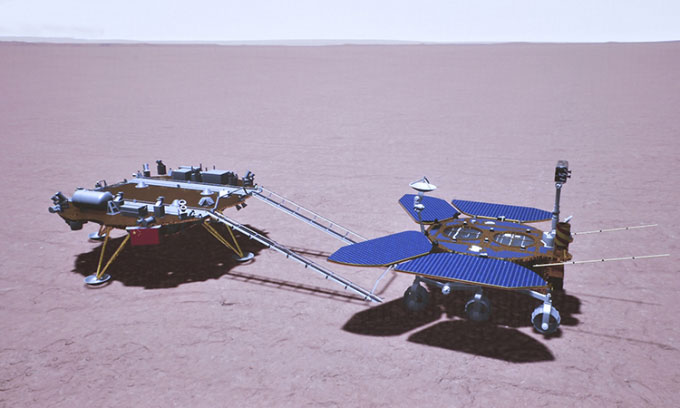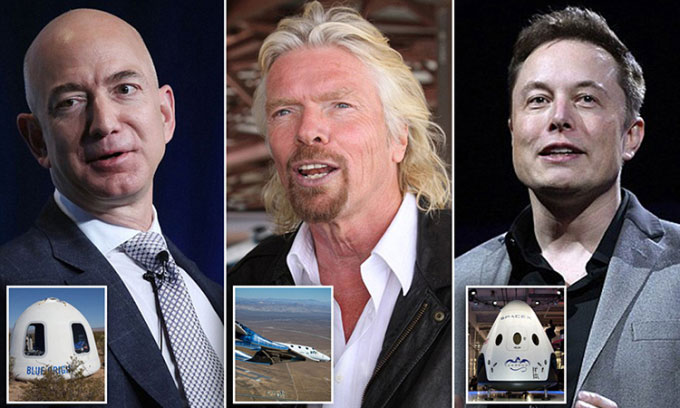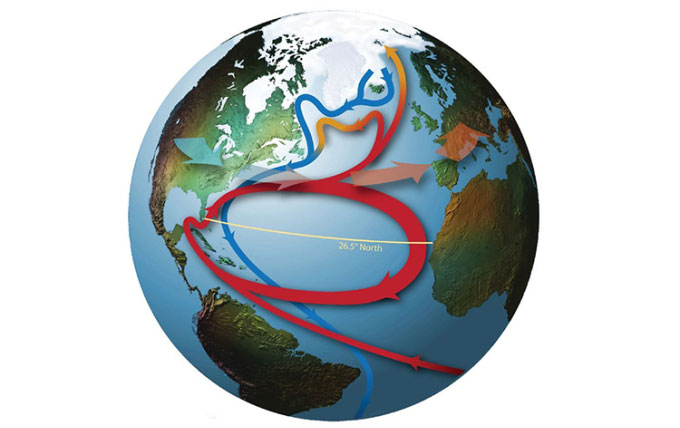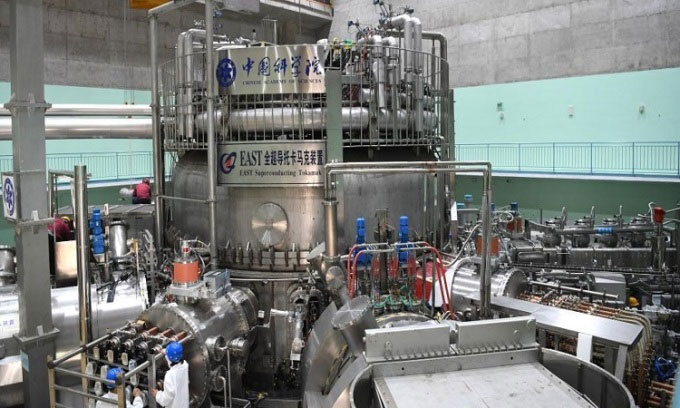In 2021, despite the impacts of the pandemic, scientists continued to make remarkable advancements in the fields of space exploration, clean energy, and artificial food.
Top Scientific Events of 2021
New Achievements in Mars Exploration
The potential for survival and life support on Mars has garnered significant interest due to the planet’s proximity and similarities to Earth. The search for evidence of life dates back to the 19th century and continues to this day. The presence of new exploratory robots promises to help scientists answer centuries-old questions, laying the groundwork for humanity’s ambitions to conquer and settle on Mars.
On February 18, 2021, NASA’s Perseverance rover, which is about the size of a rhinoceros, successfully landed on the surface of Mars after a seven-month journey, beginning its mission to search for signs of ancient life in the Jezero Crater, an area that was once a river delta with a large lake billions of years ago.
The Perseverance rover lands in Jezero Crater. Video: NASA
Perseverance is not NASA’s first robot to operate on the Red Planet, but it marks a significant step forward in space exploration. For the first time, the U.S. space agency sent a mini helicopter named Ingenuity to Mars. This device, about the size of a pigeon, was attached to the belly of Perseverance.
On April 19, after two months on the planet and conducting tests with its rotor blades, Ingenuity officially took off from the surface, reaching an altitude of 3 meters and landing after approximately 40 seconds, completing the first powered flight beyond Earth. To date, the device has successfully conducted 17 technology demonstration flights and assisted the Perseverance rover in terrain exploration.
Ingenuity’s first flight captured by Perseverance’s camera. Video: NASA
Following NASA, China successfully landed its Zhurong rover on the surface of Mars on May 15, becoming the second country to have a probe land on the planet since the United States in 1973.
After a few days of conducting diagnostic tests on-site, the Zhurong rover officially rolled off its landing platform on May 22 to explore the vast Utopia Planitia plains in northern Mars by taking pictures, collecting geographical data, and analyzing rock samples.

Simulation of the Zhurong rover rolling on Mars. Image: CNSA
The successful Mars mission is a significant step that helps China narrow the gap with the U.S. in the space race. In April, the country’s space agency also successfully launched the first module of the Tiangong space station and sent three astronauts to the station in May, paving the way for the first Chinese person to set foot on the Moon in the future.
The Boom in Space Tourism
After the race to conquer Mars, many billionaires around the world have invested significant resources and money into developing space tourism services.
On July 11, 70-year-old British billionaire Richard Branson made his first trip to the edge of space with five others aboard a spacecraft developed by his company, Virgin Galactic. Branson described this as “a once-in-a-lifetime experience.”
Richard Branson’s flight marked the beginning of the space tourism boom in 2021. Video: Space
About a week later in the space tourism race, American billionaire Jeff Bezos, along with three passengers, flew to the edge of space on July 20 using the rocket system and crew capsule of Blue Origin, the company he founded.
Both companies provided passengers with a weightless experience for 3-4 minutes and the opportunity to view Earth from above. However, the flight experiences offered by Blue Origin and Virgin Galactic still have significant differences, such as launch methods and maximum altitude.
Meanwhile, SpaceX made headlines by sending amateur astronauts into space for the first time on September 16. American billionaire Jared Isaacman purchased the flight from SpaceX to raise $200 million for children’s cancer research and subsequently gifted three tickets to inspiring individuals. They orbited Earth for three days before landing in the ocean.

From left to right: Founder Jeff Bezos (Blue Origin), Richard Branson (Virgin Galactic), and Elon Musk (SpaceX). Image: Mail
The boom in space tourism this year marks a new milestone in humanity’s quest to conquer space and reflects the growth of private companies in the aerospace sector. These companies are making space more accessible and affordable, thereby increasing its popularity.
The World’s First Living Robot Capable of Reproduction
Scientists have created xenobots, the first living robots made from stem cells, discovering that they can reproduce in a way never seen in animals or plants. Formed from the stem cells of the African clawed frog (Xenopus laevis), xenobots are living robots measuring less than a millimeter wide. First introduced in 2020, xenobots were shown to be capable of moving, collaborating in groups, and self-healing. Currently, scientists developing xenobots at the University of Vermont, Tufts University, and the Wyss Institute for Biologically Inspired Engineering at Harvard University have reported the discovery of a completely new form of biological reproduction, unlike any seen in animals or plants.
While the potential of self-replicating biotechnology may raise concerns, researchers state that these living machines are entirely controlled in the laboratory and can be easily destroyed as they are biodegradable and under the supervision of experts. This research has been published in the journal PNAS.
Global Climate Change Impacts
Continuous development, along with numerous impacts from economic activities and resource exploitation, is causing climate change to become increasingly evident.
A study published in the journal Nature Geoscience at the end of February warned that the Atlantic Meridional Overturning Circulation (AMOC)—a crucial system for distributing ocean and atmospheric heat globally—is operating at its weakest level in at least 1,600 years, partly due to climate change.
Scientists believe that warming seas and increased salinity from melting ice are changing the balance in northern seas, causing ocean currents to slow. This could push the AMOC to a “tipping point,” leading to catastrophic consequences.

Simulation of the Atlantic Meridional Overturning Circulation (AMOC). Image: Science
Climate change also threatens global food security. A study published in the journal Environmental Research Letters at the end of February examined agricultural production in 28 European countries and indicated that the severity of heatwaves and droughts affecting crop yields has tripled over the past 50 years.
Cereals, which account for nearly 65% of Europe’s cultivated area, are the most severely affected. Lead author Teresa Bras from the Nova School of Science and Technology in Portugal stated that the continuous loss of harvest warnings could lead to food shortages and drive commodity prices sharply higher.
According to scientists, the troposphere—the lowest layer of Earth’s atmosphere—is expanding by about 53.3 meters each decade since 2000 due to global warming and the contraction of the stratosphere (which lies above the troposphere), as reported in a study published on November 5 in the journal Science Advances.
Earth is also darkening when observed from space. A study published in August in the journal Geophysical Research Letters found that the “earthshine” is weakening (the reflection of sunlight from Earth back into space). This phenomenon can be measured by observing the dark side of the Moon or the part of the Moon not illuminated by the Sun.

The “earthshine” phenomenon on the Moon as seen from the International Space Station in 2011. Image: NASA
The weakening of Earth’s albedo is primarily caused by climate change, which leads to fewer clouds that reflect more sunlight compared to the ocean surface. Scientists believe this could accelerate global warming. A planet with lower reflectivity means more solar energy reaches the Earth’s surface, generating more thermal radiation. As greenhouse gas concentrations increase in the atmosphere, more thermal radiation gets trapped, causing the Earth to warm further.
Extreme weather is one of the most visible consequences of climate change. Over the past year, the world has witnessed historic floods that resulted in hundreds of deaths in Europe, along with record heatwaves and droughts in countries like the United States and Japan. The Japan Fire and Disaster Management Agency reported that an unprecedented heatwave lasting a week at the end of July led to 5,664 hospitalizations and at least 11 fatalities.
New Advances in Nuclear Fusion Energy
To create a clean, safe, and limitless energy source, many countries around the world are researching and developing fusion reactors. Unlike current nuclear fission technology, fusion reactions mimic the processes occurring in the cores of stars, generating clean, renewable energy without releasing harmful waste. While fission reactors produce radioactive waste and can occasionally experience meltdowns, fusion reactions use deuterium and tritium to create helium along with immense energy. Countries such as China, South Korea, and the United States have made significant strides, promising to make electricity generation from fusion a reality.
At the end of May 2021, the Advanced Superconducting Tokamak (EAST) achieved plasma temperatures of 120 million degrees Celsius for 101 seconds and 160 million degrees Celsius for 20 seconds, breaking the previous record of maintaining plasma at 100 million degrees Celsius for 100 seconds. EAST is designed to simulate the natural processes occurring in the Sun and other stars, aiming to provide nearly limitless clean energy through controlled nuclear fusion.

The Advanced Superconducting Tokamak (EAST) experimental reactor. Photo: Xinhua
Similarly, the Korea Superconducting Tokamak Advanced Research (KSTAR) reactor, developed by the Korea Institute of Fusion Energy, maintained a superheated plasma flow for 30 seconds in November 2021. The tokamak is designed to replicate the process that occurs in the Sun on Earth, using a series of coils placed around the donut-shaped reactor, employing magnetic fields to confine plasma heated to millions of degrees Celsius for a sufficient duration to allow nuclear fusion to occur.
The KSTAR reactor is likened to Korea’s “artificial sun.” Photo: Michel Maccagnan
Helion Energy, a U.S. company, is developing a helical fusion reactor to generate clean electricity. Unlike the tokamak, the fuel inside Helion Energy’s device is heated to extreme temperatures to form plasma, which is then confined by magnets within a Field-Reversed Configuration (FRC). Two FRCs form at opposite ends of the accelerator and collide at speeds of 1.6 million km/h, using magnets to create an intense collision at the center. Here, they are compressed by powerful magnets and heated until they exceed 100 million degrees Celsius, forcing deuterium and helium-3 to fuse, generating plasma that pushes back against the magnetic field, producing electricity that can be harvested for use.
One of the leading projects in the race to produce fusion energy is the International Thermonuclear Experimental Reactor (ITER), a collaborative effort by multiple countries, which has completed about 75% of its progress with a budget of $23.7 billion. ITER is expected to produce energy at parity by 2026 after all magnets in the tokamak chamber are completed.
Booming Development of Cultured Foods

The world’s first laboratory-produced foie gras by Gourmey. Photo: Gourmey
In July, the French company Gourmey produced the world’s first artificial foie gras from stem cells of ducks, which a Michelin chef could not distinguish from real foie gras. In August, Osaka University used stem cells from the famous Wagyu cattle to 3D print meat containing muscle, fat, and blood vessels arranged similarly to a traditional steak. These products offer a comparable experience for consumers without the costly farming processes and significant environmental impacts, nor do they involve the controversial ethical considerations of slaughtering.
In addition to animal-based cultured foods, experts are also developing plant-based options, providing more choices for vegetarians. In October, Nestlé introduced its vEGGie product, an egg substitute containing soy protein, omega-3 fatty acids, and Vrimp, a plant-based shrimp made from seaweed and peas.
In September, a Finnish research group created a coffee cup that tastes real by taking cells from a part of a plant, such as leaves, and growing them in the laboratory. This method does not require planting crops, avoiding deforestation for land, is not dependent on seasons, and does not require pesticides. The process only demands a fraction of the energy, water, and produces minimal carbon waste.
Also in September, Chinese scientists announced the successful synthesis of starch using CO2, hydrogen, and electricity. This process does not require the planting and processing of starch-containing crops like sweet potatoes or corn, significantly saving water, fertilizers, and agricultural land. This method can also be used to recycle CO2 into consumable products, helping to reduce carbon emissions and combat climate change.


















































